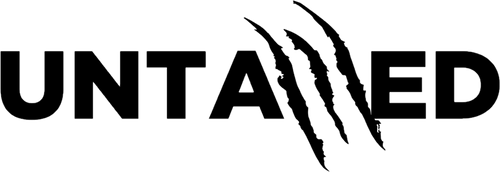A woman's menstrual cycle has long been overlooked in sports, fitness, and physical training. However, evidence now suggests that tailoring workout regimes to align with the different stages of the menstrual cycle can help improve the effectiveness and overall training output. This article will delve into the three main phases of the menstrual cycle, the effects on your perceived energy levels and mood, and, most importantly, how you can adapt your workout routines for each phase to optimise your fitness results.
The Main Phases of the Menstrual Cycle and Their Effects on Training
A menstrual cycle typically lasts 28 days and consists of three main stages - the follicular phase, ovulation, and luteal phase. The fluctuation of hormone levels within these phases can impact how you feel and perform during exercise. Let's break down the potential effects on your training output:
Follicular Phase (days 1-14):
- Estrogen and progesterone levels are generally low, making the body more adept at using glycogen for fuel. This adaptation translates to better energy levels, higher pain tolerance, and a more positive mood during workouts, allowing you to push yourself harder with more effective results.
Ovulation (around day 14):
- A peak in estrogen levels may lead to a slight laxity in joints and changes in collagen metabolism, resulting in an increased risk of injury. It's essential to exercise caution during high-impact or heavy resistance training to avoid potential setbacks.
Luteal Phase (days 15-28):
- Progesterone levels rise, causing symptoms like bloating, fatigue, irritability, and breast tenderness, affecting your energy and training output.
- Higher progesterone levels also increase core body temperature, hampering the body's ability to cool down during training. Workouts may feel more challenging than usual, and you may need to reduce the intensity or duration accordingly.
It is important to remember that every woman's experience is unique, and the general trends mentioned above might not apply to all individuals. Always listen to your body and adjust your training as needed.
"Remember what feel's good for an individual in one phase, might feel completely different for another."
Adapting Training to Align with Menstrual Cycle Phases
Now that you understand the potential effects of each menstrual cycle phase let's discuss how you can modify your workouts to optimise training outputs.
Follicular Phase: Take Advantage of Increased Energy
- Raise the intensity: Given the rise in pain tolerance and energy levels, this is the perfect phase to focus on high-intensity workouts like HIIT, plyometrics, or heavy weightlifting sessions. Your ability to recover faster during this phase enables you to challenge your limits.
- Increase workout frequency: You can handle an increased workout frequency without compromising your rest or recovery.
Ovulation: Prioritise Form and Function
- Focus on technique: Due to the increased risk of injury, this phase is an excellent time to refine form and technique. Focus on improving body mechanics and stabilising joint movements.
- Include low-impact exercises: Incorporate more low-impact activities like swimming, cycling, or yoga to maintain training output while reducing the risk of joint harm.
- Warm-up and cool-down thoroughly: Ensure proper stretching and warm-up exercises before each workout and sufficient cool-down and recovery measures after your routine.
Luteal Phase: Listen to Your Body and Adjust Your Workout Goals
- Adapt intensity and duration: Accept that you may not feel as energised due to hormonal changes during this period. Adjust your workout intensity or duration to accommodate your energy levels, and don't let slower progress discourage you.
- Stay hydrated and focus on nutrition: These aspects are crucial during this phase. Keep up your fluid consumption and pay attention to your diet quality to maintain endurance during training.
- Incorporate mind-body exercises: Activities like yoga, pilates, or Tai Chi can help you remain active while promoting relaxation and stress relief during this time.
The menstrual cycle can undeniably impact a woman's training outputs. You could improve your training effectiveness and sustainability by tailoring your workouts to the specific hormonal changes in each phase.
Understanding the menstrual cycle as a guide for physical training is a crucial aspect of optimising workouts for women. Paying attention to the body's unique fluctuations throughout the cycle can help women make the most of their training by capitalising on periods of high energy and knowing when to step back to prevent injury or over-exertion.
"Listen and feel for the signs. Then adapt accordingly. If you feel good and the body feels good, go for it."
Recognising that every woman's experience is different, it is essential to spend time listening to one's own body and adapting workouts to align with individual needs. By harnessing the awareness of physical and emotional changes during the various phases of the menstrual cycle, women can achieve greater balance, satisfaction, and effectiveness in their fitness journey while fostering a healthier connection with their bodies.
Sophia Berreen is a remarkable force in the personal training sphere, boasting an impressive 15-year tenure in the industry and consistently showcasing her unrivalled passion for fitness. As a testament to her commitment to excellence, Sophia ranked inside the top 50 UK female athletes in the CrossFit Open in 2021, demonstrating her significant achievements in high-intensity functional training. Further expanding her repertoire, she is also a skilful coach who holds pre-and post-natal exercise and CrossFit coaching certifications, ensuring her expertise encompasses many fitness areas. With her wealth of experience and unwavering dedication to helping others reach their peak performance, Sophia Berreen is a true inspiration and an invaluable leader in our fitness community.

